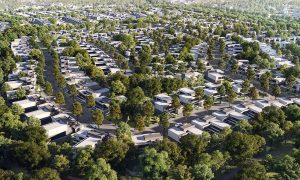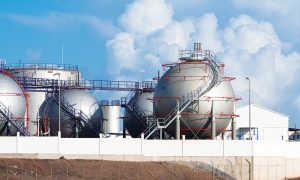Front End Digital Twins: Shifting the paradigm for project engineering and cost estimation practices
AspenTech’s Sonali Singh, VP, Performance Engineering Product Management and Elizabeth Lok, solution management director, Performance Engineering look at digital twins for FEED

The concept of digital twins for an operating asset has been discussed at length as they are increasingly being developed in the drive towards operational excellence. Results of utilising operational digital twins include increased throughput, higher product quality, reduced emissions and a reduction in unplanned downtime.
However, the development of digital twins for Front-End Engineering Design (FEED) and construction has been less widely discussed. Why is this important? It’s important because the decisions made during FEED essentially lock in many of the factors that determine how smoothly the procurement, construction, and handover phases will go and how well the asset will perform over its lifetime. Discussion with customers indicates that many of the complex and expensive problems that arise during construction can be traced back to incomplete or poorly executed FEED.
Our ability to influence project outcomes decreases with time while the cost of changes to the project design increases with time. Therefore, modeling and visualizing concepts, outcomes, and costs as early in the project life cycle as feasible would be highly valuable for controlling project expenditure and maintaining the EPC schedule.
The “Front-End Digital Twin”
At AspenTech’s bi-annual OPTIMIZE 2021 conference in May, ExxonMobil presented a session concerning an ongoing initiative to enhance decision-making during FEED through better access to cross-discipline engineering and cost estimation data. Now they can visualize the elements of the project and understand the tradeoff implications of different conceptual approaches. This facilitates a better understanding of the cost and risk “hot spots” on projects and identify potential constructability issues that may require extra attention.
In the next evolutionary step of the initiative, ExxonMobil is moving to what they refer to as a “Front-End Digital Twin.” The company’s objective for the digital twin is to leverage it for early insights on design performance, construction execution, and cost implications. The intention is to use it to evaluate different design concepts quickly, clarify tradeoffs between stick versus modular construction, and better understand costs, including insight into less transparent factors such as indirect costs. Ultimately, the vision is to consider many options for a plant, simultaneously evaluating factors such as performance, cost, safety, and construction to rapidly reach the most optimal design concept. In fact, ExxonMobil has already shrunk concept development time from 30 weeks down to one month.
SAPREF, a refining joint venture between Shell and BP Southern Africa, takes a similar approach to project cost estimation. The model develops an integrated cost estimate using a volumetric cost estimating tool that can be synchronized with the engineering data, essentially creating a “twin” of the cost estimate. This synchronized data is used to enhance collaboration with contractors, and can also be re-used on a future project, improving accuracy. This approach can potentially save SAPREF up to 5% on projects.
It’s not just cutting-edge owners driving the industry towards better, faster, and more efficient approaches to plant design and concept selection. Almost every EPC we’ve met within the past 18 months, even pre-COVID, were rolling out their digitalization initiatives, often with the same goals —to consider more options faster to obtain the best result for their customer without compromising safety. The general approach is through consolidation of engineering applications, connecting data and workflows, and enabling re-use of engineering and cost data across functions, offices, and extended teams, thereby facilitating the creation of digital twins of plant concepts. As this idea ‘shifts left’ from operations into the design, everyone benefits.
Another example of modeling during design for improved outcomes involves the very successful EPC contractor Petrofac. Using process simulation and heat exchanger modeling tools, Petrofac rapidly modeled complex alternatives that would otherwise be difficult to understand. The resultant configuration of the heat exchanger network achieved a 20% increase in capacity with a payback period of one month.
The emergence of ‘front end’ digital twins to enhance the design, engineering, and cost estimation functions for large capital projects is changing the paradigm for early design, conceptualization, and FEED. This positive trend will not only benefit project execution and enhance communications between owners and contractors but will provide more insight into complex projects that are emerging to achieve sustainability targets.



















